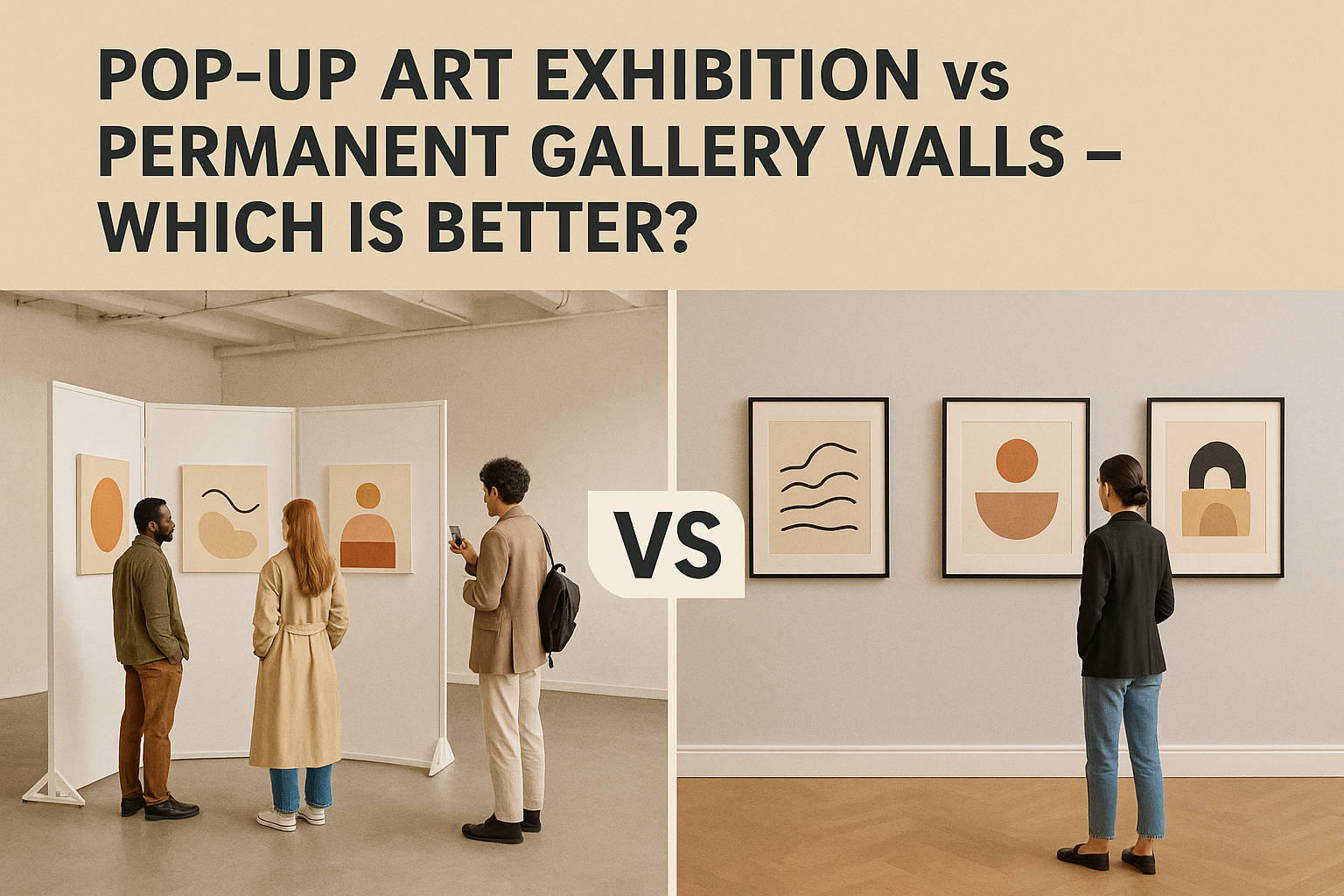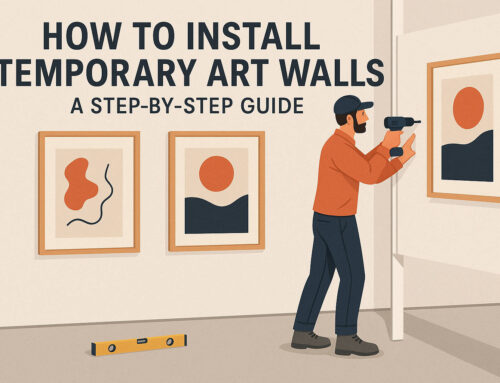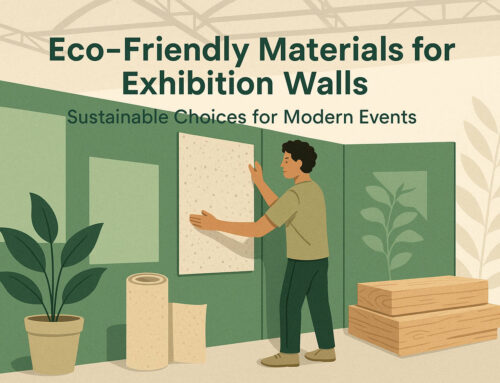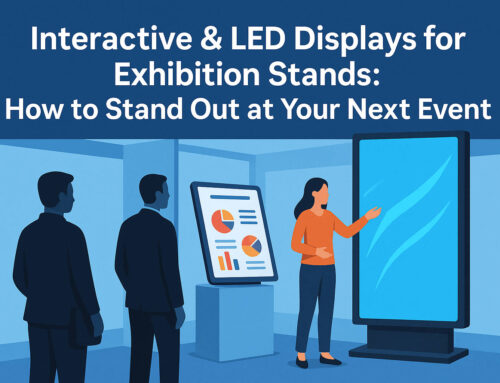🎯 Why Choosing the Right Display Matters
Whether you’re an artist, curator, or gallery owner, the way you present your work affects visitor experience, engagement, and sales.
Choosing between a pop-up art exhibition or permanent gallery walls isn’t just about space — it’s about flexibility, cost, and audience reach.
Let’s explore the pros, cons, and ideal use cases for each option.
🏗️ Pop-Up Art Exhibitions: Flexibility and Impact
A pop-up exhibition is a temporary art display that can appear in almost any location — galleries, shops, or public spaces. Modular walls, partitions, and freestanding panels are often used to create these temporary layouts.
✅ Advantages
-
Flexibility: Easily reconfigure walls, lighting, and layout for different events.
-
Lower cost: No permanent construction — hire modular walls for short-term use.
-
Accessibility: Reach new audiences in unconventional locations (cafés, shopping centres, events).
-
Marketing Opportunities: Pop-ups generate buzz and social media engagement.
❌ Disadvantages
-
Short-term exposure: Limited time for visitors to see the art.
-
Setup required: Installation and dismantling take effort and planning.
-
Less permanence: Visitors may perceive it as “less official” than a traditional gallery.
💡 Tip: Pop-up exhibitions are ideal for launching new collections or touring multiple locations.
🏛️ Permanent Gallery Walls: Stability and Prestige
Permanent walls are fixed installations in galleries, museums, or dedicated art spaces. They provide a consistent backdrop for exhibitions and often include integrated lighting and climate control.
✅ Advantages
-
Professional presentation: Adds prestige and perceived value to your work.
-
Long-term exposure: Visitors can see your art over months or years.
-
Durability: Built-in lighting, climate control, and security protect the artwork.
-
No recurring setup costs: Once installed, minimal ongoing effort is needed.
❌ Disadvantages
-
Limited flexibility: Difficult to change layouts or relocate.
-
Higher initial cost: Construction, renovation, and maintenance are more expensive.
-
Audience reach: Confined to gallery visitors — harder to attract casual passersby.
💡 Tip: Permanent galleries are ideal for established artists or long-term exhibitions.
🧩 Key Factors to Consider
FactorPop-Up ExhibitionPermanent Gallery WallsFlexibilityHighLowCostModerate / Short-termHigh / Long-termAudience ReachWide & variedLimited to gallery visitorsSetup TimeMediumLow after initial buildMarketing PotentialHighModeratePrestigeMediumHigh
🔄 Hybrid Approach: Best of Both Worlds
Many artists and curators now combine both approaches:
-
Use modular walls in temporary pop-up exhibitions to test new collections and markets.
-
Transition successful pieces to permanent gallery displays for long-term exposure.
This hybrid model maximises visibility, engagement, and revenue.
🎨 Example: A contemporary artist launches a pop-up exhibition in a city centre, generating press and social media buzz, then selects top-performing pieces to be installed in a permanent gallery.
🏁 Conclusion: Which Is Better?
There’s no one-size-fits-all answer:
-
Choose a pop-up art exhibition if you value flexibility, cost-efficiency, and marketing buzz.
-
Choose permanent gallery walls if you prioritise prestige, long-term exposure, and durability.
-
Consider a hybrid approach for maximum reach and impact.
At [Your Company Name], we specialise in both temporary modular art walls and permanent gallery installations, helping artists and curators create spaces that suit their goals, budget, and audience.
👉 Contact us today to plan your next exhibition — pop-up, permanent, or both.





